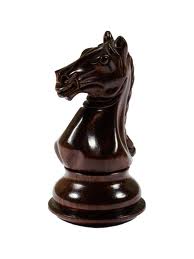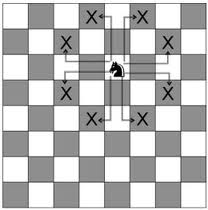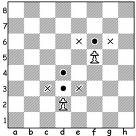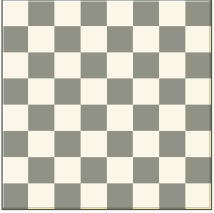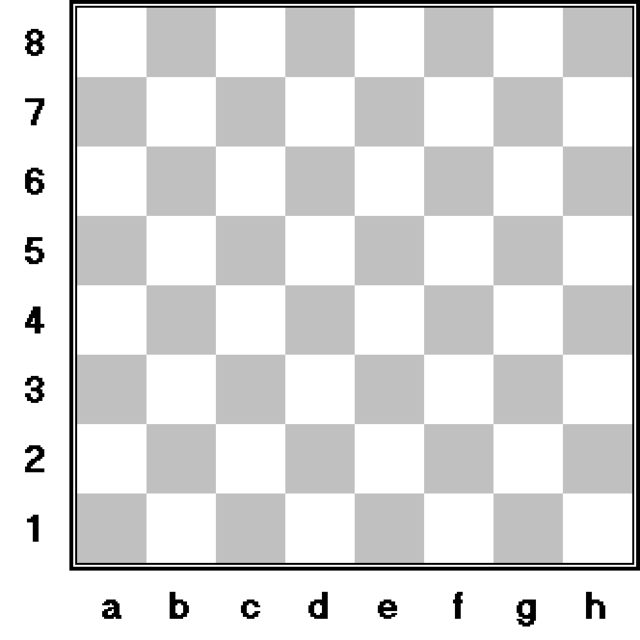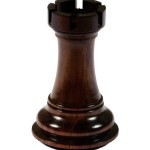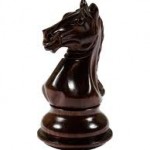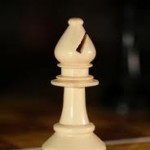In part 1 of “All About Pieces”, we talked about how the King, Queen, and Rook all move as well as how many points each are worth. Here, in part 2, we’ll talk about the Bishop, Knight, and Pawn.
The Bishop
The Bishop (worth 3 points) is able to move along the diagonal as many spaces as he wants. You begin the game with 2 Bishops: 1 on light-colored squares and 1 on dark-colored squares. The Bishops may never change; that is to say a Bishop that starts on a dark square will always be on a dark square and a Bishop on a light square will always be on a light square. Here’s an illustration of how the Bishop moves.
The Knight
The Knight, also worth 3 points, is a little trickier to master. It is the only piece capable of jumping over other pieces (after all, it’s a horse)! The Knight moves in an “L” shape of 2 spaces (either horizontal or vertical) followed by 1 space (vertical if you moved horizontal first, or horizontal if you moved vertical first). This sounds tricky, I know, but if you count the spaces in your head, it becomes much easier. Just count 2 spaces either up/down or left/right, and then move in 1 space in a direction that would complete an “L” or “J” shape. Here’s an illustration to hopefully make the point clearer (I chose a slightly different type of picture for you so you can see the actual L shapes).
The Pawn
The Pawn is the least valuable piece on the board at a whopping 1 point. The pawn moves forward in a straight line when it’s moving, but attacks diagonally. On a Pawn’s first move, it may move either 1 space or 2. On all other moves (either moving or attacking) it can only go 1 space at time. All other pieces attack the same way they move, which is what makes the Pawn difficult to remember for some as it breaks the rules all other pieces live by.
It can actually make one more “special” move, but I don’t want to tell you about it now and confuse you further. So just know that the Pawn moves forward but attacks diagonally, and that on it’s first move it can move either 1 space or 2 spaces, but then only 1 space each time after that. To illustrate this, here’s a picture where the dots are spaces the pawns may move to and the x’s are spaces they attack (you’ll notice the pawn on d2 is still in it’s starting location so it can move 1 space or 2, while the pawn at f5 has already moved and so it can only move 1 space at a time).
So that’s how all the pieces move. Try practicing the movements and commit them to memory before you start playing any games (though, I’m sure if you explain to a friend/family member you’re learning how pieces move, they’ll help you if you make a mistake).
Now that you know how the pieces move, you’re about 90% done with learning how to play chess. Now you just need to learn how to win! That’s coming in the next blog.
Have a topic you’d like me to cover or a question you’d like to ask? send me an e-mail at [email protected]



